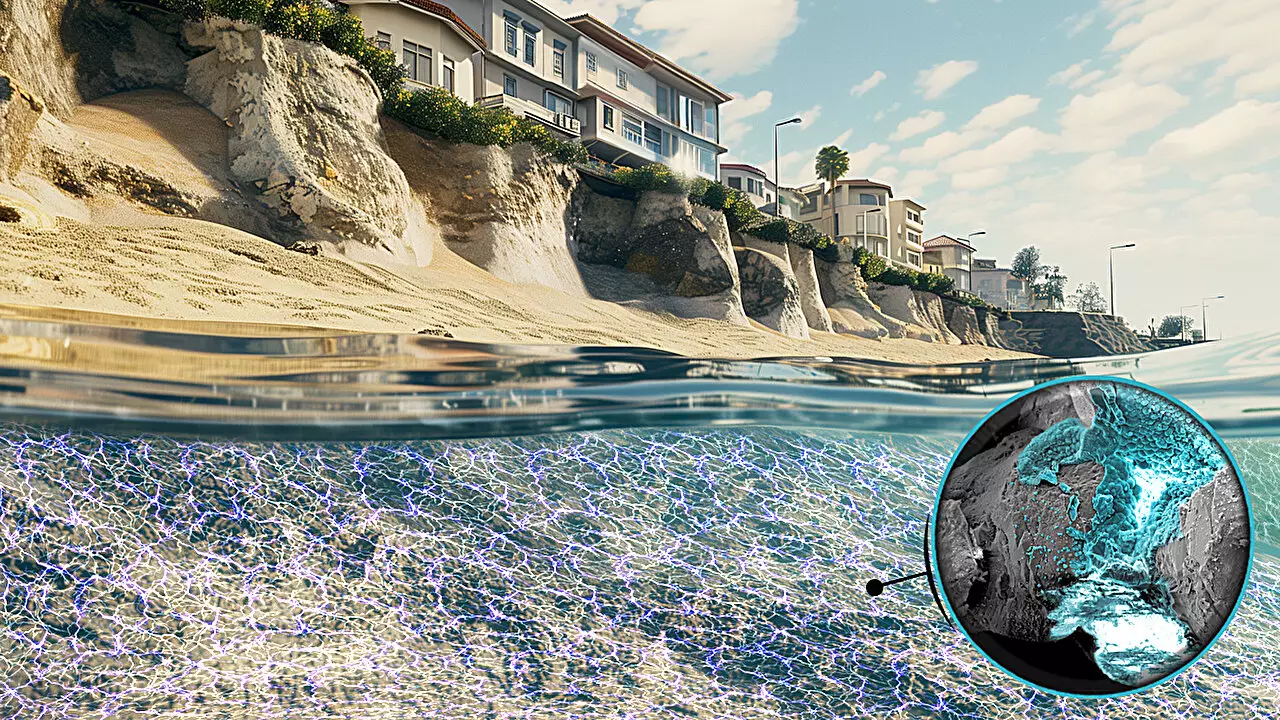As climate change intensifies, the threat of coastal erosion becomes more pressing, directly impacting communities that rely on stable shoreline ecosystems. Recent research from Northwestern University introduces a groundbreaking method of strengthening marine coastlines through the application of electrical currents, potentially ushering in a new era of sustainable coastal protection. This innovative approach not only presents a viable alternative to traditional methods but also offers promising long-term benefits for the environment and local economies.
Coastal erosion is a widespread phenomenon exacerbated by climate change, sea-level rise, and extreme weather conditions. According to alarming statistics from the European Commission, almost a quarter of the world’s beaches could be washed away by the end of this century. This reality poses significant risks to both the economic stability of coastal communities and the health of marine ecosystems. Historically, responses to erosion have included the construction of hard infrastructure like sea walls and barriers or the injection of external binders to stabilize sandy substrates. However, these methods have proven to be costly, inefficient, and often detrimental to the surrounding environment.
The recent study spearheaded by Professor Alessandro Rotta Loria at Northwestern University draws inspiration from nature. Clams, mollusks, and coral utilize dissolved minerals from seawater to fortify their shells, demonstrating an innate ability to build robust structures sustainably. Researchers mirrored this natural process but employed electrical energy rather than biological metabolic processes to induce chemical reactions in marine sand. By harnessing natural minerals found in seawater, they developed a method to create a solid, rock-like substance that binds sand particles together, offering a more resilient alternative for coastal defense.
In controlled laboratory settings, applying a mild electric current ranging from 2 to 4 volts triggered fascinating chemical transformations in marine sand. This process resulted in the formation of calcium carbonate and other solid minerals that function as natural cement. By solidifying the sand, this method not only enhances its structural stability but also mimics the natural strength of coral reefs and mollusk shells. Remarkably, the technique can be applied to various sand types, including silica, calcareous, and iron sands, showcasing its versatility and broad applicability.
Traditional methods for combating coastal erosion include significant financial investments in protective barriers and the environmentally invasive practice of injecting cement into beach dunes, with costs ranging as high as $70 per cubic meter. In stark contrast, Rotta Loria’s approach costs between $3 to $6 per cubic meter, presenting a far more accessible and economical solution. Furthermore, this technique sidesteps many pitfalls faced by conventional engineering methods, such as the deterioration of sea walls over time and subsequent infrastructure collapse due to liquified sand.
Addressing environmental concerns is vital in any coastal restoration strategy. The electrical stimulation used in this new method is relatively mild, ensuring that it doesn’t adversely impact marine life. Preliminary findings suggest that similar techniques have been employed without harming sea creatures, demonstrating a commitment to ecological integrity. In addition, the reversible nature of the process means that if communities decide to dissolve the cemented sand, they can simply reverse the electrical current to restore the original state.
The ramifications of this research go beyond mere erosion prevention. The technology has potential applications in repairing existing reinforced concrete structures that have suffered from environmental wear and tear or in stabilizing soil slopes in various settings. By offering a solution that not only strengthens coastlines but also repairs infrastructure, this innovative technique stands to reshape approaches to environmental engineering.
Next on the agenda for Rotta Loria’s team is to transition from laboratory experiments to real-world applications. Planned field tests on beaches aim to further validate the technique outside controlled conditions, potentially setting the stage for widespread adoption across vulnerable coastal regions.
As coastal regions face unprecedented challenges from climate change, the need for innovative solutions has never been more urgent. The approach stemming from Northwestern University’s research underscores the balance between technological advancement and environmental stewardship. Through the intelligent application of electrical energy, communities could discover a sustainable way to fortify their shores for generations, ensuring both ecological health and economic stability in a rapidly changing world. The fusion of science with nature’s own strategies highlights the possibilities that lie in protecting our coastlines from the looming threats of erosion.

